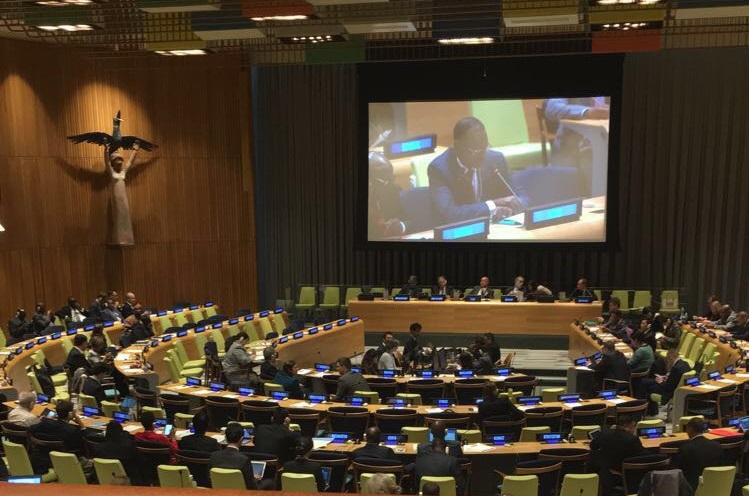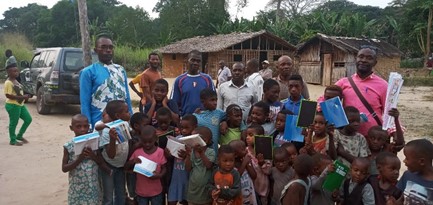Mainstreaming Forest Landscape Restoration and the Bonn Challenge within the Global Forest Goals of the United Nations Forum on Forests
This week the 12th session of the United Nations Forum of Forests will be held at UN headquarters in New York, touching on key topics regarding the implementation of the recently approved UN Strategic Plan on Forests 2017 – 2030 (UNSPF) and the Quadrennial Work Programme 2017 – 2020 of the UNFF, as well as the monitoring, assessing and reporting under these new instruments in coordination with other reporting systems, means of implementation of the Global Forest Goals, among other pivotal matters. Forest landscape restoration (FLR) is at the center of these discussions.

Photo: Courtesy IUCN
In January 2017 the United Nations Forum on Forests (UNFF), which has universal membership, adopted the United Nations Strategic Plan for Forests 2017-2030 (UNSPF). The UNSPF constitutes the global framework for the sustainable management of forests and provides an impetus to halt deforestation and degradation in the world. It is premised on its six Global Forest Goals and their 26 associated targets.
Global Forest Goal (GFG) 1 aims to reverse the loss of forest cover worldwide through sustainable forest management (SFM), and to increase efforts to prevent forest degradation and enhance the resilience of all types of forests to climate change. It has four targets including the target of increasing the Earth’s forest cover by 3% by 2030 (Target 1.1.), maintain or enhance the world’s forest carbon stocks (Target 1.2), restoring degraded forests by 2020 (Target 1.3), and strengthening resilience and adaptation of forests to climate change (Target 1.4).
Achieving these targets will result in gaining 120 million hectares of forests[1] (approximately the size of South Africa) by 2030, which will play an invaluable role in climate change mitigation and adaptation, biodiversity conservation and the achievement of the Sustainable Development Goals (SDGs). This target is a reflection of the growing momentum to achieve the reversal of forest cover loss through diverse forms of restoration including afforestation, reforestation, natural or assisted regeneration, and protective activities around the world.
IUCN’s current Work Programme 2017 - 2020 supports this ambitious target through its action pillar on forest landscape restoration (FLR), which is catalysed at the international level through the Bonn Challenge - a global effort to bring 150 million hectares of degraded forest and deforested land into restoration by 2020 and 350 million hectares by 2030.
The UNSPF targets and the Bonn Challenge are mutually reinforcing. The FLR approach, on which the Bonn Challenge is based, includes restoring forests and increasing forest cover as called for in the UNSPF targets but also other enhancements to forest landscapes, such as agro-forestry and on-farm trees, silvopasturalism, improved fallow, and planting of non-tree woody plants.
The Bonn Challenge will contribute to other targets under Global Forest Goal 1 including enhancing the world’s forest carbon stocks and promoting the implementation of SFM. It is also aligned with UNFF Global Forest Goal 2 that focuses on enhancing forest-based economic, social and environmental benefits and Global Forest Goal 3 that is aimed at increasing the area of sustainably managed forests.
Interventions at the landscape level identify best ways to address the drivers of deforestation and forest degradation in a given area, providing sustainable alternatives to local communities that look to forests for fuel, fiber and food, as well as providing solutions to limit the expansion of agricultural landscapes and unsustainable extraction practices into forest areas. In doing so, FLR interventions conducted under the Bonn Challenge create two-fold benefits: divert human pressure from primary forests and intact forest landscapes as well as allow restoration of areas where degraded forest landscapes can become functional and productive. This assessment of best restoration opportunities can be conducted utilising the Restoration Opportunities Assessment Methodology (ROAM), which has been applied in 26 countries so far with positive results for restoration planning and implementation.
Today, forests support the livelihoods of 1.6 billion people, a significant proportion of which live in under-developed countries. Healthy forest landscapes are their insurance policy against climate change, and the UNFF and Bonn Challenge targets will play a key role in securing their futures. During this 12th session of the UNFF IUCN looks forward to working with UN member states to define pathways and options for implementing Targets 1.1. to 1.4 through groundbreaking thinking around FLR and the Bonn Challenge.
IUCN will host an official side event during the UNFF 12th session on May 4th entitled ‘Forest Landscape Restoration (FLR) and the Bonn Challenge under the UNSPF’ where there will be discussions on how pledges to the Bonn Challenge can be integrated into a country’s national contributions towards achieving the GFG of the UNSPF, as well as other international forest-related commitments.
[1] Under 2015 FAO’s FRA Terms and Definitions, forest is define as “Land spanning more than 0.5 hectares with trees higher than 5 meters and a canopy cover of more than 10 percent, or trees able to reach these thresholds in situ. It does not include land that is predominantly under agricultural or urban land use".
—Written by Adriana Vidal



